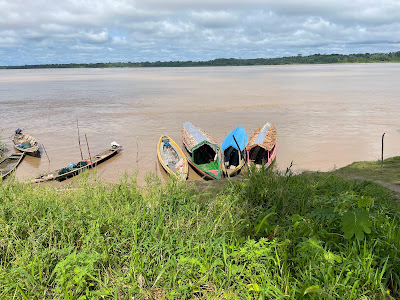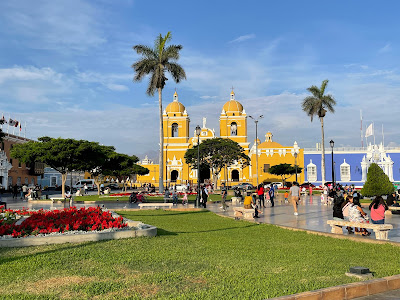History, Kunze Farm
Darlene Kunze
Part I
My great grandfather, Alexander Kunze, came to Minnesota in I868 and acquired farming land. Later my grandfather, Oscar Kunze, lived and worked on the farm, and my father, Willis Kunze, grew up on the farm. He later built a house on a piece of the property which is the house I live in now.
In the late 1800’s, the Kunze farm was located approximately at Nebraska and Victoria, northeast of Como Lake. This area was part of Rose Township. It consisted not only of farm land, but also hills and swamps. Eventually the hills would be leveled with donkey-pulled plows, and the swamps filled in.
Map by Willis Kunze, 1990
Farmers in the area originally were regular farmers, but found that truck farming was more profitable as more and more people moved into the St. Paul area. Truck farms grew vegetables and they were delivered to St. Paul daily by horse-driven carts and later by trucks. Farmers close to the city found that vegetables for daily shipments were the most profitable because people needed fresh food daily. It provided farmers with many opportunities for a growing urban market. In the first decade of the 20th century these farms were known as “urban fringe farms”. They were in the shadow of the city and depended upon the residents of the city for their income (St. Paul Historical Society, Vol. 20, No. 3, p. 6). The Kunze farm not only grew vegetables, but also flowers, peonies and lilacs which were cut, packed and sent to Duluth and Chicago.
Original farm house with greenhouse on side
Map of farm by Willis Kunze, 1990
My great grandfather, Alexander Joseph Kunze (1840-1919) was from Prussia (formally a part of Germany) as was his wife, Matilda Hohlen (Holmann) (1845-1917). According to census data, they were married in 1868 and most likely came to the United States at that time and acquired land in Minnesota. Perhaps he came to this country to avoid military service as was common at that time. They built a farmhouse consisting of thirteen rooms and eleven out buildings. All nine of their children were born in the farmhouse. My grandfather, Oscar Kunze (1878-1971), was the fifth child.
Alexander and Matilda with Oscar
The house had various addresses because the names of the streets changed. Originally, in 1870, Nebraska was Woodland Ave or Grove Street, and Victoria was perhaps Plum Street that became Quincy Street. In the 1905 census the address was listed as the corner of Quincy and Nebraska. The address of the farm was at first 1514 Quincy, then 1269 Quincy and by 1916, the farmhouse was 875 and the farm buildings were 883 Nebraska at the northeast corner of the intersection. Later when my house was built in 1942, it became 875 and the former farmhouse 883 (Information from historical maps and census data).
1886 map
1920
Alexander, my great grandfather, must have done well. The family could afford to go to the photographer and have their portraits taken; in the photographs you can see that the children are well-dressed.
1892, Oscar top row, third from left
Alexander was respected in the community; he was president of St. Paul’s Growers Association and active with this group at the State Fair. In a newspaper article from 1903 (The St. Paul Globe, Sept. 3, 1903), it mentions prizes he won for his vegetables. He also farmed potatoes on a property that today is Roselawn Cemetery. My grandfather recalled that they had to plant and harvest all the potatoes by hand and that they also had to pick off potato bugs and later kill them by pouring hot water on them. The potatoes were sold at 25 cents a bushel (Pioneer Press, November 21, 1968). Willis, grandson of Alexander and son of Oscar, remembers Alexander as being strict and one who liked order.
Two years prior to Alexander’s death in 1919, my grandfather, Oscar (1880-1971), moved onto the farm with his family, his wife Hilda (1881-1954), sons Harold and Willis (Bill), and daughter, Dorothy.
Willis and Harold, 1920
The first decade of the 20th century truck farming was extensive and profitable, but later city folk weren't so dependent on the farms close to urban areas because there were new national markets for goods and products that became available. There wasn’t such a great demand for local fresh fruits and vegetables. Whatever food was needed could be delivered in a few days from anywhere in the country (St. Paul Historical Society, Vol. 20, No. 3, p. 9). Oscar continued to farm, but not full time. He also began to work at various companies: Merrill Greer Chapman, Wholesale Crockery Company, and Louis F. Dow Company.
Changes had come to urban farming near St. Paul in the second decade of the twentieth century. The second part of the story will share my grandfather’s and my father’s memories of the Kunze farm.
Part II
Kunze Farm by Darlene Kunze
Grandfather Oscar and father Willis share memories of the Kunze farm in this second part of the Kunze farm story. Information is also from a newspaper clipping, interviews, and a personal account written by my father, Willis. In the newspaper on the occasion of Oscar’s 90th birthday (Pioneer Press, November 21,1968), he was interviewed at the Gibbs farm on Larpenteur and Cleveland where as a boy, his family visited the Gibbs family. He remembers the kids went to the kitchen and knit while the adults played 66, a German card game. He says that the boys and the girls all knit, if you wanted warm mittens or long socks, you had to knit them yourself. They stayed until midnight and then went home after having something to eat.
Oscar also recalled that in the winter they would gather up fish at night that came to the open water where the ice had been harvested on Como Lake. They’d scoop them up out of the water with pitchforks and throw them in the back of the wagon. By the time they got home, the fish would be frozen. Later, they would cook them with bran and short, a flour substance, and feed them to the pigs. He also remembers his mom making bread with short.
My father, Willis (1911-1906), was about seven years old when he moved to the farm. He remembers the many outbuildings, such as barns for the different animals (pigs, chickens, cows, horses), a greenhouse attached to the south side of the house, and a windmill which he liked to climb. He would wave a white flag as a signal when he had finished chores and was able to play. The property covered about eight square blocks, and the nearest of five farms was over a block away. The immediate yard was covered with peonies and lilacs. Eventually rooms on the house were eliminated and the animal barns were torn down.
Winter mornings were cold because there was only a wood burning stove in the kitchen and a coal stove in the next room, and it was especially cold if the fire went out. It was my dad’s job to cut wood for the stove. To the east of the house was a hill for sledding. I also went sledding on this hill when I was growing up. Dad says there was a skating rink across the street near the fire hydrant where the city flooded a rink. Dad played hockey with home-made gear and clamp-on skates. The road was plowed with a V-shaped plow pulled by a team of horses.
Eventually electricity came in 1912, telephone in 1918, and water with sewer mains in 1936, which is when they eliminated the windmill and water tank. Willis went to Logan School and then Como Elementary and later Mechanic Arts High School. One of his teachers, Mr. Zumbach, at Logan School, was hurt when a streetcar jumped the tracks. Dad was captain of the school police at Como Elementary School and got to ring the school bells. In 1929 when he was eighteen years old he worked the summer at the Ganzer truck farm nearby.
Not much information is available about the women in the family. Their job was to care for the house and children. Matilda had nine children over a period of 20 years so she must have been busy. When she was old, she wandered on the neighboring farms and my dad used to find her and bring her home. My grandmother, Hilda, was quiet and mild-mannered except when she was going after snakes with a hoe, and apparently there were plenty when the new houses were being built.
Eventually in the 1930’s lots were sold and the city took over. My house was built by my parents in 1942 and was given the address of the farm, 875, and the farmhouse became 883. The farmhouse was sold in 2006 and a new home was built.
Farmhouse 1940’s
Farmhouse 1990’s
I have a special affinity to the land where I live, which is where the Kunze farm was located. I can imagine Great Grandfather Alexander tilling the soil and growing beautiful organic vegetables, ones that earned prizes at the State Fair. My family grew up on beautiful organic vegetables that my dad grew, a skill he no doubt inherited from his grandfather, Alexander. Dad often talked about the lovely peonies in front of my house and the lilacs next door that were originally from the farm. When I was growing up my grandfather Oscar lived next door in the farmhouse. He was always a part of my life and I remember playing games with him. After graduating from Macalester College, I spent many years living and teaching English abroad. Eventually I returned to Como, and later moved into my childhood home after my mother passed away and my dad moved into the old farmhouse next door. For many reasons I feel attached to the land where the Kunze farm was located.











































